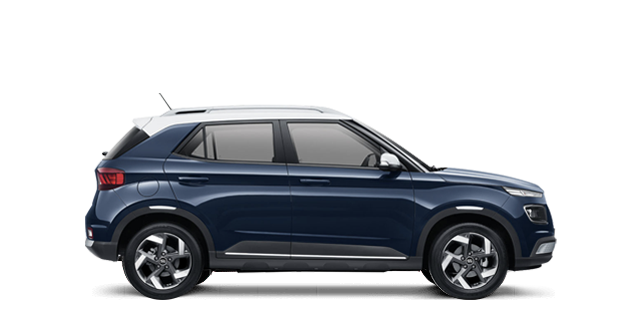Hyundai Motors has established itself as a formidable player in the global automotive industry, known for its reliable vehicles that offer great value for money. This guide delves into the pricing strategies and range of Hyundai cars available in different markets, providing insights for potential buyers.
Understanding Hyundai’s Market Segmentation
Hyundai offers a diverse lineup of vehicles, ranging from compact cars to SUVs and electric vehicles. Each segment targets specific consumer needs and preferences, influencing pricing strategies.
Segmentation Overview
- Compact Cars: Hyundai’s compact cars like the Accent and Elantra are priced competitively to appeal to budget-conscious buyers seeking fuel efficiency and practicality.
- Sedans and SUVs: Models such as the Sonata and Santa Fe cater to families and commuters, blending comfort with advanced features, reflecting slightly higher pricing tiers compared to compact models.
- Electric and Hybrid Vehicles: With the rise of eco-conscious consumers, Hyundai’s electric offerings like the Kona Electric and Ioniq Electric are priced to compete with other eco-friendly options in the market.
Factors Influencing Hyundai Car Prices
Several factors influence Hyundai’s pricing strategy, affecting how models are positioned in the market and their perceived value.
1. Cost of Production
- Hyundai’s production costs, including labor, materials, and overheads, directly impact pricing decisions.
- Economies of scale from large-scale manufacturing help keep costs competitive.
2. Technological Advancements
- Incorporation of advanced technology features such as smart safety systems, infotainment, and hybrid/electric drivetrains can justify higher pricing in certain models.
- Research and development investments play a crucial role in pricing newer, technologically advanced models.
3. Competitive Analysis
- Hyundai benchmarks its pricing against competitors to ensure it offers compelling value.
- Market positioning against rivals like Toyota, Honda, and Volkswagen influences pricing decisions across different regions.
4. Geographical Variations
- Pricing strategies are tailored to regional market conditions, including taxes, tariffs, and local consumer preferences.
- Hyundai adapts pricing to maintain competitiveness while accounting for currency fluctuations.
5. Brand Perception and Value
- Hyundai’s reputation for reliability and customer satisfaction contributes to its brand equity, influencing pricing.
- Premium models like the Genesis line reflect higher pricing, leveraging Hyundai’s brand image in luxury segments.
Also Read : Top Hyundai Car Models to Check Out in 2024
Hyundai Car Price Range by Model
Let’s explore Hyundai’s popular models and their typical price ranges across different segments:
A. Compact Cars
- Hyundai Accent
- Price Range: $15,000 – $20,000
- Features: Basic amenities, fuel efficiency, and a reliable engine make it an ideal entry-level sedan.
- Hyundai Elantra
- Price Range: $19,000 – $25,000
- Features: Enhanced comfort, technology integration, and safety features justify its slightly higher price compared to the Accent.
B. Sedans
- Hyundai Sonata
- Price Range: $24,000 – $35,000
- Features: Spacious interiors, advanced infotainment, and optional hybrid drivetrain options cater to mid-range sedan buyers.
C. SUVs
- Hyundai Tucson
- Price Range: $24,000 – $32,000
- Features: Compact SUV with versatility, advanced safety features, and optional all-wheel-drive configurations.
- Hyundai Santa Fe
- Price Range: $28,000 – $40,000
- Features: Larger SUV offering premium amenities, ample cargo space, and advanced driver-assistance systems.
D. Electric and Hybrid Vehicles
- Hyundai Kona Electric
- Price Range: $35,000 – $45,000
- Features: Long-range electric SUV with advanced tech features, appealing to eco-conscious buyers.
- Hyundai Ioniq Hybrid
- Price Range: $25,000 – $30,000
- Features: Fuel-efficient hybrid sedan with a sleek design and advanced safety features.
Case Studies: Hyundai’s Pricing Strategies in Different Markets
1. North America
- Hyundai targets affordability and reliability, with competitive pricing against Japanese and American automakers.
- Example: Pricing the Tucson competitively to appeal to SUV buyers looking for value and reliability.
2. Europe
- Emphasis on design, fuel efficiency, and environmental standards influences pricing.
- Example: Introducing the Ioniq Electric with competitive pricing to attract environmentally conscious consumers in European markets.
3. Asia-Pacific
- Hyundai adapts to diverse market preferences and economic conditions across countries like South Korea, Australia, and India.
- Example: Offering tailored pricing and trim options for models like the Elantra to cater to varied consumer demographics.
Conclusion
Hyundai’s pricing strategy is a blend of competitive positioning, technological innovation, and market segmentation. Understanding these factors helps prospective buyers make informed decisions based on their budget and preferences. Whether you’re looking for a compact car, sedan, SUV, or eco-friendly vehicle, Hyundai offers a range of options that balance affordability with features and reliability.
By analyzing Hyundai’s pricing across different models and markets, it becomes evident how the company maintains its competitive edge while meeting diverse consumer demands. Whether you prioritize affordability, advanced technology, or eco-friendliness, Hyundai’s lineup has something to offer for every discerning car buyer.
In conclusion, Hyundai continues to evolve its pricing strategies to reflect market dynamics and consumer trends, ensuring its vehicles remain accessible and desirable in the global automotive landscape.
(source)
Originally posted 2024-07-22 06:37:10.
